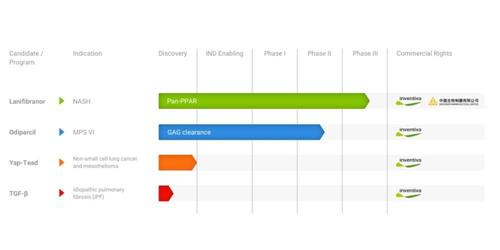(Boursier.com) — inventive a biopharmaceutical company specializing in the clinical development of orally administered small molecules for the treatment of nonalcoholic steatohepatitis and other diseases with unmet medical need, today announces the selection of five scientific abstracts for poster presentation at of the International Liver Congress 2023 organized by the European Association for the Study of the Liver (EASL) to be held June 21-24, 2023 in Vienna, Austria.
The first assesses the correlation between severity and improvement in fatty liver disease, increased adiponectin levels, and improvement in cardiometabolic markers after 24 weeks of treatment with lanifibranor. Based on the results of Inventiva’s Phase IIb clinical study, NATIVE, evaluating lanifibranor in NASH, the authors analyzed the correlation between cardiometabolic biomarkers and hepatic steatosis, a marker of cardiovascular risk, in treated patients. by lanifibranor or placebo. Hepatic steatosis was measured histologically and by imaging using FibroScan(R) Controlled Attenuation Parameter (“CAPTM”). As previously demonstrated, treatment with lanifibranor improves fatty liver and cardiometabolic health biomarkers, including adiponectin, insulin resistance, and markers of lipid and glucose metabolism.
In this analysis, these beneficial cardiometabolic effects were shown to correlate with improved steatosis, measured both histologically and with CAPTM.
The second abstract concerns the identification of non-invasive tests as potential predictive tools of the histological response or non-response to lanifibranor treatment. Based on data from the NATIVE study, the authors assessed the ability of early improvements in aminotransferase levels measured after 4 weeks on lanifibranor to predict histological non-response to treatment assessed at 24 weeks. The results demonstrated that in NASH patients treated with lanifibranor, the absence of a 15% reduction in alanine aminotransferase (“ALT”) levels after 4 weeks of treatment was an effective predictor of non-response on the histological resolution of NASH.
In addition, early decreases in ALT and aspartate aminotransferase (“AST”) levels after 4 weeks of lanifibranor correlate with improvements in hepatic non-invasive biomarkers and cardiometabolic markers after 24 weeks of treatment.
The third abstract assesses the effect of lanifibranor on portal pressure in models of hepatic and pre-hepatic portal hypertension. Since portal hypertension (“PHT”) can lead to serious complications in patients with advanced chronic liver disease (“ACLD”), the authors evaluated the effect of daily treatment with lanifibranor on two mouse models of portal hypertension. They demonstrated that lanifibranor reduced portal pressure independent of reduction in fibrosis or an effect on metabolism but through reduction of mesenteric venous vascular expansion and splanchnic angiogenesis, as well as improvement of endothelial cells liver sinusoidal.
The fourth abstract evaluates the effect of lanifibranor on portal pressure, endothelial dysfunction and liver histology in a rat model with early NAFLD. The authors demonstrated that in a mouse model of early NAFLD without inflammation or fibrosis, treatment with lanifibranor normalized portal pressure and transhepatic pressure gradient. In addition, lanifibranor improved hyperresponsiveness to the vasoconstrictor methoxamine and hyporesponsiveness to the vasodilator acetylcholine in the mouse model of NAFLD. At the same time, the authors also demonstrated a decrease in steatosis assessed histologically, which however remains insufficient to explain the vascular effects observed.
The fifth abstract compares the effect of each PPAR isotope to lanifibranor pan-PPAR on improving vascular alterations and histology in a mouse model of NAFLD. The authors demonstrated that in a mouse model of early NAFLD with steatosis but without inflammation or fibrosis, treatment with Fenofibrate (PPAR-alpha agonist), GW501516 (PPAR-delta agonist), and Rosiglitazone (PPAR-gamma) decreased portal pressure and the transhepatic pressure gradient without normalizing them, with a limited effect on hepatic steatosis. Improvements in vascular function were even more pronounced with lanifibranor than with either of the PPAR agonists. These data suggest that there is an additive effect with a combination of PPAR agonists compared to mono-agonists leading to greater improvement of vascular alterations in early NAFLD.
